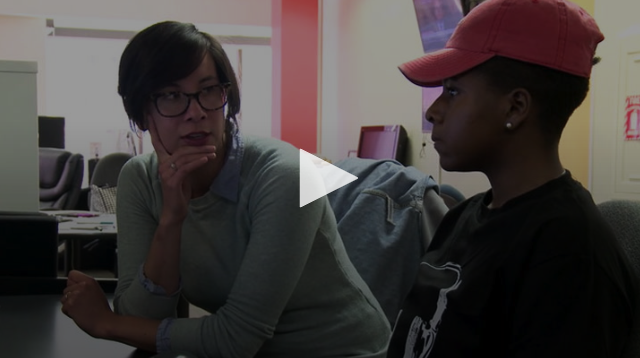Are you trying to figure out how to extend your students’ interest and engagement in democracy beyond the midterm elections? Elections are exciting, but staying informed and participating in our democracy is important to do year round. In fact, if we only teach about civics and politics before elections, we may be sending the message that the only way to be engaged is by voting. For those of you who would like to help students thoughtfully follow the news and find other ways to participate, here are four ways you can thread civic engagement into your classroom and curriculum throughout the school year.
Practice Judging the Credibility of Online Information
Helping young people navigate the sea of information online today is increasingly critical. There is more information at young people’s fingertips, and there’s also an array of misinformation. Early research demonstrates that civic media literacy education can be significantly beneficial. For example, helping students develop the skills and capacities to tell what is accurate, as well as helping students become aware of their biases in order to cultivate a commitment to accuracy, can make a difference (Hodgin & Kahne, 2018). You can explore these dynamics by watching KQED’s Why Do Our Brains Love Fake News? with your students. Then check out the lesson ideas included in the Investigation & Research section of the Educating for Democracy Deep Dive to dig deeper.
Discuss Current & Controversial Issues
Engaging young people in discussions of local, national, and international issues is a key way to deepen their civic knowledge, expose them to multiple perspectives, and help them learn how to engage in productive deliberation. At a time when we’re all increasingly exposed to divisive and uncivil political dialogue, helping your students learn how to discuss heated and contentious issues in productive and respectful ways is critical. In this video, Sean Paris engages his middle school students in a collaborative discussion about teen driving. He encourages them to cite textual evidence in their discussion, collaborate in small groups to push their thinking and develop compelling arguments, and voice their perspectives in constructive ways. Again, you can check out the Productive Discussions resources in the Educating for Democracy Deep Dive to get more lesson ideas.
VIDEO: Arguing the Pros and Cons of Teen Driving
Support Student Voice
The other key role educators can play is to support students in voicing their perspectives on issues that matter to them. With the rise of digital media and online platforms, young people (and adults) now have significantly more opportunities to produce and circulate ideas and information. In this video, Infographics for Change, you can see how twelfth grade teacher Chela Delgado guides her students to design an infographic that visually displays the key aspects of the issue they researched, the root cause, and a theory of change they believe people can enact to make a difference in addressing the issue.
VIDEO: Infographics for Change
In another video, Writing Commentaries: The Power of Youth Voice, with Teresa Chin from Youth Radio, you can watch students begin to write a commentary about an issue they care about, which they will later publish via radio and/or social media.
VIDEO: Writing Commentaries: The Power of Youth Voice
Finally, take a look at the resources on the Voice page of the Educating for Democracy Deep Dive to learn more about helping students develop their civic voices, as well as how to help youth to reflect on the public and persistent nature of online content and to carefully consider what to circulate and to whom.
Create Opportunities for Informed Action
The fourth important experience you can offer your students is the opportunity to take informed action. Getting involved and taking action enables students to develop civic knowledge, build civic skills, gain experience working with others, and deepen their civic commitments that will last well into the future. Educators can play a key role in supporting youth to analyze issues fully in order to identify relevant and effective tactics and strategies for action, as well as learning the skills needed to tap into the power of digital media to participate in a variety of ways. Watch this video to see how ninth grade teacher Matt Colley’s students work in small groups to research and plan an action project focused on a contemporary problem. Then explore the resources on the Taking Action page of the Educating for Democracy Deep Dive to learn more about ways you can help your students take action.
VIDEO: Encouraging Students to Take Action
As the midterm elections come to an end, consider the ways that your classroom and school can continue to be a vibrant democratic space where students learn about issues that matter to them, productively discuss topics of concern, voice their perspectives in compelling ways, and make a difference by taking informed action.











